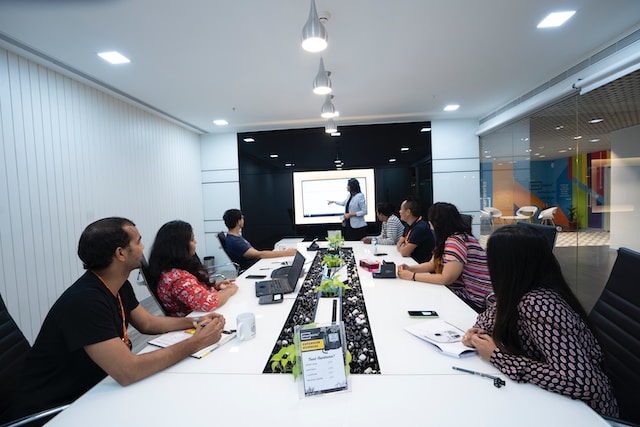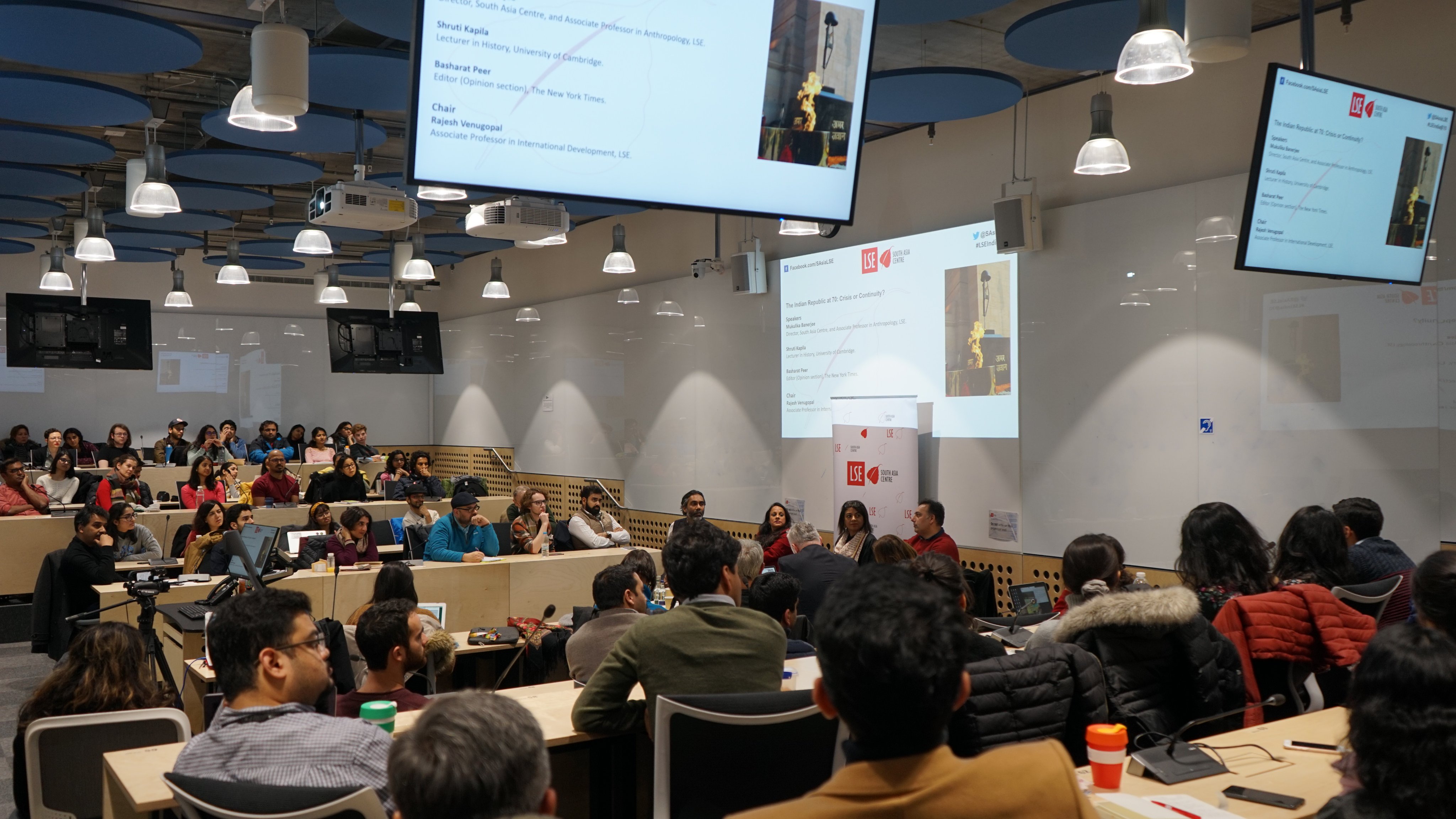With the highest population in the world, a steady and growing economy and a large labour force, India is an important economy on the global stage. Yet, a combination of factors — structural and societal — hinders an inclusive work culture and work force to the detriment of both her peoples and organisations. Yatharth Garg, Nikita and Jasmine Virhia examine the issue, and suggest short- and long-term initiatives that may help bring more inclusivity to the workplace.
India has been one of the fastest-growing economies in the world. Through its steady progress, it is projected to become the world’s third-largest economy by 2027. While this growth has been fuelled in part through strategic outsourcing practices, it is important to recognise that India has transcended its initial role and evolved into a global leader, especially in the technology sector. Understanding employment conditions of a nation that is home to 1.4 billion people is therefore crucial not only for world economic growth, but for organisations to successfully foster inclusion at the global level.
There is an intricate and delicate balance between India’s economic growth and the challenges of achieving workplace inclusion, particularly for women. It is crucial to understand how workplace culture, persisting social norms and gender dynamics intersect if we want to achieve a a more equitable future workplace.
Work-Life Balance
India ranks extremely low with regard to work-life balance. Current data shows that a staggering 45 per cent of employees in India experience a sense of dread when approaching their work due to a prevailing poor workplace culture; this underscores the urgent need to address the cultural and organisational factors that contribute to this disheartening reality. Twenty-nine per cent of formally employed women across sectors (manufacturing, construction, trade, transport, education, health, hospitality, IT, business outsourcing and financial services) are expected not only to fulfil the responsibilities of their role but to adhere alongside to traditional gender roles of caring and familial responsibilities, thereby reducing labour force participation whilst simultaneously upholding gender imbalances.
On a positive note, recent research has shed light on the key drivers of the Employee Value Proposition (EVP) for Indian employees. The findings reveal that work-life balance, organisational reputation, and competitive salary packages rank among the critical factors that shape an employee’s perception of their workplace. These aspects are instrumental in attracting and retaining talent, shaping employee satisfaction, and fostering a positive work environment. Great Place to Work has ranked Hilton, Cisco systems, Salesforce and DHL in the top 10 companies to work in India, alongside Atlassian India (IT services) and REA India (real estate services).
Whilst progress to create a better work-life balance in professional careers — particularly for women across India — may seem slow, the country also ranks among the top 5 globally to offer paternity leave of 2 weeks, and 6.5 months of fully paid maternity leave, mandated by the government.
Navigating the Challenges of Global Work Culture
Beyond outsourcing, India has emerged as a vital talent hub for global companies. The nation’s ability to offer a skilled and diverse workforce has led to the establishment of over 1,300 global corporations with more than 1.3 million employees through their global capability centres. India has also experienced a surge in entrepreneurial activities as recent rankings place it as the third-largest start-up ecosystem in the world. As of September 2022, India is home to 107 ‘unicorns’( which refers to startups that have been valued at $1 billion and more), totalling a value of $340.79 billion.
However, a culture of treating the West as the primary ‘stakeholder’ persists. For instance, several companies, despite having their operation centres in India, align their working hours with UK/US time zones to align with the presence of senior leadership and clients abroad. This approach hinders global inclusion and places an unfair burden on Indian employees who must adjust their working hours to match those of the West. Research has consistently highlighted India’s distinctive hierarchical culture, which inevitably influences the professional work environment. For instance, this culture fosters an expectation that demands unwavering respect for seniors. As a result, Indian workers tend to shoulder the responsibility of adjusting and even extending their working hours when those in senior positions, such as clients or leaders, function in different time zones.
Furthermore, the persistence of inflexible shifts — particularly ‘graveyard’ shifts in some call centres and global trading companies — can lead to health issues and restrict employment choices for some (like women), limiting workplace diversity.
Overall, practices around inflexible work shifts can potentially impede productivity, and requiring talent to work uncomfortable hours every day is a sure way to lose them to the competition, especially in a highly-competitive job market like India. Employers must proactively seek ways to foster an inclusive environment that accommodates diverse talent in these work settings.
To achieve this, companies should adopt a multifaceted approach that addresses the unique challenges posed by different workplaces and time zones.
- Embrace Flexible Working Hours: By allowing team members to adapt their schedules according to their respective time zones, employers can ensure that everyone has an equal opportunity to engage in real-time collaboration and contribute meaningfully to the team’s objectives. A recent ILO report shows that flexible working hours can also enhance work-life balance and employee retention, ultimately leading to improved productivity and better business outcomes. In addition to general positive impacts on work-life balance, flexibility has particularly higher gains for women who typically bear the brunt of domestic responsibilities.
- Promote Shared Responsibility: Encouraging shared responsibility among team members for coordinating across different regions fosters a spirit of inclusivity and collaboration. This approach also enhances mutual understanding and cultural exchange, strengthening team cohesion and camaraderie.
Inflexibility Obstructs Women’s Progress
A report by LinkedIn discusses the challenges that Indian women face at the workplace. The study showed that 72 per cent women are unwilling to accept jobs that do not allow a flexible work environment; 94 per cent women in a study by Deloitte believe that requesting a flexible work set-up could set them back for promotions. Most middle-class Indian women carry the majority of caring responsibilities for children and/or the elderly. While the government has announced mandatory maternity leave of 26 weeks and on-site childcare facilities, surveys reveal that this has in fact reduced employability for women as employers worry about increased costs. Additionally, the brief 15-day state-mandated paternity leave enforces the notion of women being perceived as primary caregivers. Fifty-four per cent of women who changed their working hours in 2021 said that the amount of time they spend looking after dependents has increased. Indian women (especially younger women) also express higher levels of burnout compared to the global average. This stems directly from non-inclusive work environments presenting substantial barriers for female employees. Stringent employment policies can have a detrimental impact on women’s work–life balance and labour force participation. They risk losing highly productive workers to more flexible competitors.
Even women who do manage to achieve balance between professional and personal commitments encounter numerous impediments in the workplace. Indian corporate culture remains male-dominated, which relegates women to an ‘outsider’ status. Women are frequently excluded from the informal communication channels between colleagues that are critical for gaining awareness of career advancement opportunities, coveted projects, and interfaces with organisational leadership. This entrenches existing inequalities by obstructing women’s ability to ascend the corporate ladder. Many women recount their ideas being dismissed as inconsequential during meetings, which further isolates them and stymies organisational progress. The under-representation of women in middle and senior management positions represents another major challenge, as the presence of female leaders can help advance the careers of women. Programmes like V Lead by Vedanta, Women’s leadership programme by Genpact, and Women in Leadership by Tech Mahindra are great examples of initiatives by Indian companies to reduce gender inequity at the workplace.
However, truly levelling the field requires changes in national policy.. By educating adolescent boys and girls on gender equity, the country will witness greater labour force participation from Indian women. Jain and Jayachandran (2020) evaluated an intervention aimed at reducing support for societal norms that restrict women’s and girls’ opportunities. This included education on gender-based discrimination, changing dominant perceptions of girls and women, raising aspirations of girls and, most importantly, how to implement attitudinal change into behavioural change — the last linked to various aspects of women’s lives including education, work, marriage and fertility. By emphasising both human rights and pragmatism throughout the intervention, findings demonstrated that support for gender equality increased by 16 per cent. A follow-up study two years later showed that effects persisted and resulted in more gender-equal self-reported behaviour, highlighting the importance of including boys and men in the gender equity conversation.
In the short-term however, organisations can bolster their inclusion efforts by making small changes to build a more effective gender-inclusive workplace:
- Encouraging Paternity Leave: Implementing more generous Paternity Leave policies encourages fathers to take on more childcare duties, which can relieve women from bearing the full responsibility of childcare.
- Addressing gender pay gaps: Auditing compensation packages and improving wage transparency will help make women feel valued at the workplace and avoid disproportionate financial impacts of rising costs.
Understanding the complexities of work culture in India and attempting to dismantle barriers to inclusion is not just a goal, but a moral and strategic necessity. By addressing social norms which hinder equal participation in the workplace, organisations can contribute to a societal change which is inclusive and thrives on collaboration and collective progress.
*
The views expressed here are those of the authors and not of the ‘South Asia at LSE’ blog, the LSE South Asia Centre or the London School of Economics and Political Science. Please click here for our Comments Policy.
This blogpost may not be reposted by anyone without prior written consent of LSE South Asia Centre; please e-mail southasia@lse.ac.uk for permission.
Banner image © Smartworks Coworking, New Delhi, 2019, Unsplash.
*







